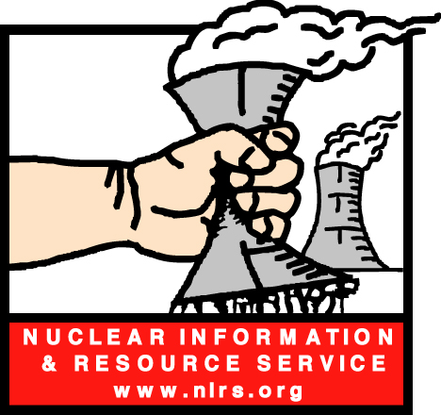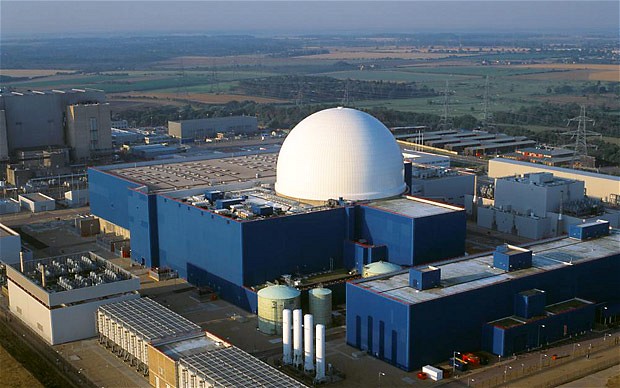
Blog
-
Geiger Readings for December 08, 2014
Ambient office = 84 nanosieverts per hourAmbient outside = 130 nanosieverts per hourSoil exposed to rain water = 128 nanosieverts per hourHoney crisp apple from Central Market = 67 nanosieverts per hourTap water = 115 nanosieverts per hourFiltered water = 109 nanosieverts per hour -
Geiger Readings for December 07, 2014
Ambient office = 85 nanosieverts per hourAmbient outside = 87 nanosieverts per hourSoil exposed to rain water = 111 nanosieverts per hourBartlett pear from Central Market = 84 nanosieverts per hourTap water = 114 nanosieverts per hourFiltered water = 102 nanosieverts per hour -
Radiation News Roundup December 06, 2014
Deadly radioactive material up around 50,000,000% at Fukushima plant in recent months. enenews.com
International conference in Vienna gives evidence of the humanitarian impact of nuclear weapons. nuclear-news.net
New Mexico has fined the U.S. Energy Department more than $54 million over accidents at the country’s only underground repository for nuclear waste. nuclear-news.net
6 workers inhaled uranium at Wyoming mine after yellowcake spill. nuclear-news.net
-
Geiger Readings for December 06, 2014
Ambient office = 103 nanosieverts per hourAmbient outside = 74 nanosieverts per hourSoil exposed to rain water = 106 nanosieverts per hourCelery from Central Market = 38 nanosieverts per hourTap water = 106 nanosieverts per hourFiltered water = 85 nanosieverts per hourBlack Cod – Caught in USA = 185 nanosieverts per hour -
Nuclear Reactors 184 – Anti-nuclear Groups Oppose Nuclear Support in EPA Clean Energy Plan
The United States Environmental Protection Agency has been soliciting public comments for its proposed Clean Power Plan which is intended to reduce carbon emissions from power plants generating electricity. The Nuclear Information and Resource Service has been working to send thousands of public comments to the EPA that criticize the Plan.
The NIRS solicited public comments are generally supportive of the EPA Plan but they are concerned about the lack of support of aggressive pursuit of renewable energy sources. The comments were also very critical of the Plan’s support “for aging, uneconomic nuclear reactors already rejected by the marketplace, and which can easily be replaced with cleaner renewables and energy efficiency programs.” The NIRS presented the EPA with a wealth of detailed information about the shortcomings of the Plan and also many suggestions about how to fix the problems. They said that they are now focused on what comes next, viewing the proposed Plan as the start of a process and not the culmination.
The NIRS issued a press release about their reaction to the EPA plan. In the press release, they state that one hundred and forty eight organizations representing millions of Americans are joining together to urge the EPA to ” reconsider and remove its unwarranted support for nuclear power in the plan.” The press release goes on to point out that in their view, nuclear power is counterproductive because of “its excessive cost, its widespread environmental impact not related to climate change and its inhibition of deployment of clean energy technologies.” Even though it has a smaller carbon footprint than fossil fuels, it still has a considerably larger carbon footprint than renewable energy sources. In spite of these facts, the EPA Plan calls extending the lifespan of aging reactors and the construction of new reactors.
The NIRS forwarded over twenty thousand comments from individuals critical of the EPA Plan. Some of the comments focused on the “woefully incomplete and alarmingly inadequate” EPA evaluation of the effect of nuclear waste and nuclear power plants on water resources. Some comments pointed out that the EPA failed to address many other environmental problems including the mining of uranium and the possibility of nuclear accidents.
Comments also highlighted what they referred to as the “dangerous fallacy” that closed nuclear power plants would have to be replaced with fossil fuel power plants. They point out that renewable energy has been growing faster than any other type of new power generation. Replacing all of the old nuclear power reactors with wind power could be accomplished in two years at a cost below the current market price of electricity. The commenters were especially upset by the support for subsidizing the rate paid for nuclear power when these low cost alternatives are available.
The executive director of NIRS flatly stated that nuclear power is not going solve global warming or even substantially reduce carbon emissions from power generation. He said that the biased incentives for the nuclear industry must be removed from the EPA Plan. “Nuclear is too costly and unreliable to solve the climate crisis, and it is simply too dirty and dangerous. Solar, wind and other clean energy solutions have arrived, and every dollar wasted promoting nuclear is a dollar that won’t go to solving the climate crisis.” He called on the EPA to listen to the millions of citizens of the U.S. who are convinced that nuclear power is a bad idea and not worthy of government or public support.
-
Geiger Readings for December 05, 2014
Latitude 47.704656 Longitude -122.318745Ambient office = 95 nanosieverts per hourAmbient outside = 101 nanosieverts per hourSoil exposed to rain water =103 nanosieverts per hourCarrot from Central Market = 99 nanosieverts per hourTap water = 73 nanosieverts per hourFiltered water = 64 nanosieverts per hour -
Nuclear Reactors 183 – Most of Britain’s Operating Nuclear Power Reactors Will Have to be Decommissioned in the Next Fifteen Years
I have blogged before about the aging nuclear reactors around the world and the need to decommission many of them in the near future. Today I am going to talk about the problems confronting the United Kingdom nuclear power industry. A panel of experts has stated that all but one of Britain’s nuclear power reactors will have to be shut down within fifteen years because of economic and/or safety problems.
Almost all of the nuclear power reactors in Britain were built in the 1970s and 1980s with an expected lifespan of twenty five years. They have all been authorized to continue to operate beyond this twenty five year license. A former inspector of nuclear installations says that they are still operating safely for the time being. However, he said that the time will come soon when it will not be economical to operate them or they will be unsafe. One of the major issues with aging reactors that use graphite for moderating the nuclear reaction as the British reactors do is the fact that the cracks form in the graphite control rods as time passes. While it is not certain when the rods become unusable, it is certain that that day will come.
Closing all these existing power reactors would mean a loss of about twenty percent of the electricity generated in Britain. The only current reactor expected to be operating by 2030 is the Sizewell B power station.
Britain is working with the French company Areva to build a new nuclear power reactor at the Hinkley Point power station. There have been some problems with the Hinkley project including questions about foreign stakes in the new reactor. Areva has been encountering some financial problems lately but denys that they will affect the new Hinkley Point reactor. Despite vocal anti-nuclear groups in Britain, the public support for new nuclear power stations has been increasing recently.
While there is support for expanding nuclear power in the European Union, there are member nations that are turning away from nuclear power. Germany has declared that it is turning off all its nuclear power plants in favor of pursuing renewable sources of energy. France which gets the majority of it power from nuclear reactors is currently engaged in a heated debate about the future of nuclear power in France. Recent announcements by the French government about the future of nuclear powers indicate that the French public seems to be less supportive of nuclear power than in the past.
All over the world, the nuclear reactors from the period of intense reactor construction in the 1970s and 1980s are reaching the end of their lifetimes. Several reactors have been shut down in the U.S. recently because they were not able to be competitive in the energy market or they are getting too expensive to repair. Most of the old reactors will have to be decommissioned which is a complex and expensive process. Reactor operators in the U.S. are supposed to maintain a fund specifically for decommissioning but the NRC has been leaning on members of the nuclear industry who cannot prove that they have enough money in the fund. In addition, the cost of decommissioning is just going to keep rising.
All the nuclear power reactors in the world should be shut down and decommissioned as soon as possible. Every year that passes increases the cost of decommissioning and potential for serious accidents.
Sizewell B power station:
-
Radiation News Roundup December 04, 2014
Oxford professor in Japan says that people enjoy effects of radioactive contamination. enenews.com
Emergency repairs reported at largest nuclear power plant in Europe. enenews.com
Media jumps on shutdown event at Zaporizhya NPP In Ukraine. nuclearstreet.com
AREVA Signs Contract with Exelon for Used Nuclear Fuel Storage. nuclearstreet.com





